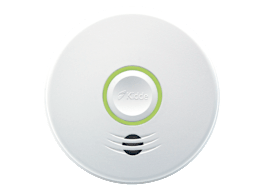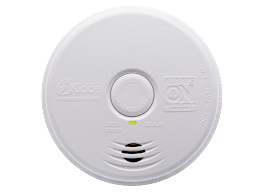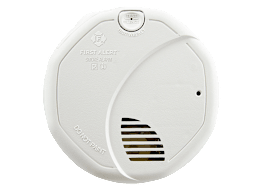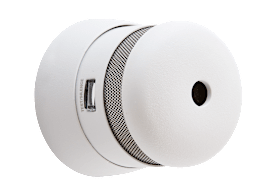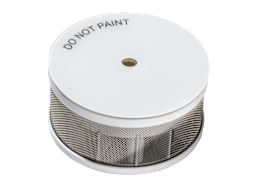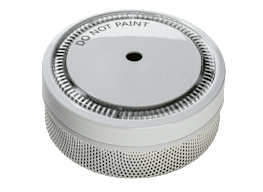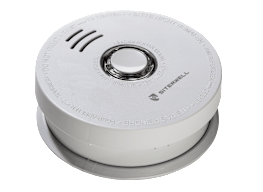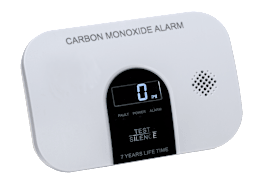Google Nest Protect Smoke and Carbon Monoxide Detector Review
This easy-to-use but imperfect smoke and CO detector will alert you even when you’re not home
When you shop through retailer links on our site, we may earn affiliate commissions. 100% of the fees we collect are used to support our nonprofit mission. Learn more.
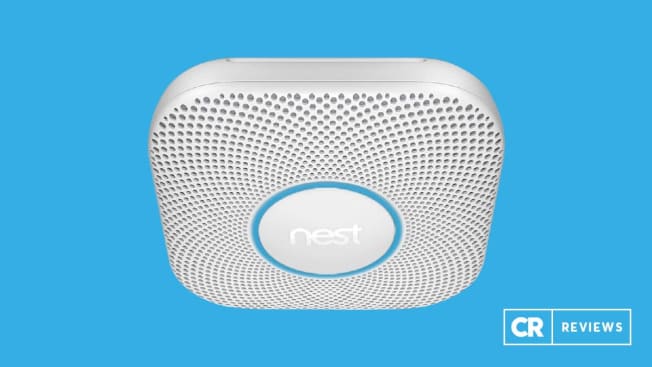
The Google Nest Protect (second generation) brings high-tech prowess to what has historically been a rather low-tech device—the humble smoke and CO alarm. Beyond the many convenience features typically offered by WiFi-enabled detectors (including the ability to send smartphone alerts and hush the alarm from a smartphone app), the Nest Protect smoke and CO alarm offers a few more bells and whistles.
Some are helpful (like wireless interconnect); some are not (a redundant self-testing system). It also costs around $120, which is somewhat pricey, even for a smart alarm. But user-friendly design and seamless connectivity may make it worthwhile. The second-generation Google Nest Protect was released back in 2015, and Google has yet to update its design since then, except for a minor visual refresh.
Notable Features
- Wireless interconnect. Both battery-powered and hardwired Nest Protects use a wireless interconnect so all alarms go off in unison in the event of an emergency. This isn’t necessary if your home uses only hardwired detectors, but it’s helpful for older homes without smoke/CO detector wiring, as well as partly renovated older homes, with older rooms needing battery-powered detectors and newer rooms needing hardwired detectors.
- Self Test, Sound Check, and Safety Checkup. These three features all do the same thing: test the alarm. Self Test runs every 200 seconds and checks the device’s smoke sensor, CO sensor, WiFi, and power. Sound Check runs once a month and checks the detector’s speaker, horn, and light ring. Safety Checkup is a manual test you initiate from the Nest app that checks all seven attributes from both Self Test and Sound Check.
- Pathlight. A light ring illuminates at night to help you see in the dark and avoid stumbling over toys or a sleeping pet on bathroom trips.
- Heads-Up. A voice alert goes off when smoke levels are rising—but not yet high enough to sound the alarm—to let you know that an alarm is imminent. If you know it’s a false alarm, say, from accidentally burning food on your stove, you can hush the alarm before it goes off.
How Well Does the Google Nest Protect Smoke and CO Detector Work?
We ran the Google Nest Protect through CR’s lab tests, and used it in real-world situations at home. Here’s what we found:
According to our lab tests, the Nest Protect does a superb job at detecting smoky, smoldering fires and low levels of carbon monoxide (100 parts per million). Its performance at detecting high levels of CO (400 parts per million) falls in the middle of the pack. But it does a poor job of detecting fast, flaming fires with minimal smoke, typical among photoelectric smoke detectors. Given that flaming fires (for instance, a cooking fire) are common, we recommend either using a dual-sensor (both photoelectric and ionization) alarm or pairing the Nest Protect smoke alarm with an ionization smoke alarm, which detects flaming fires. A good option is the Kidde i9010 (Battery), $20. Google claims that the Nest Protect uses a special “split spectrum” photoelectric sensor to help it detect both smoldering fires and flaming fires, but our testing didn’t back that up.
On the home front, we’ve used multiple Nest Protect alarms in five rooms for over three years, and we’ve found the features useful. Setup takes about 15 minutes per alarm, and we’ve found that we can cook bacon without fear of the alarm scaring the kids and pets. The Pathlight was a tad too bright for bedrooms at night, but at least we were able to turn them off. What we like best about the Nest Protect? The alarm notifications, which provide peace of mind when we’re on vacation.
Consumer Reports has full test results for the Google Nest Protect and 58 other smoke and carbon monoxide detectors.
Who Is the Google Nest Protect Smoke and CO Detector For?
The Google Nest Protect is great for people who want the extra peace of mind of remote alerts and automated alarm testing through the Safety Checkup feature, as well as those who frequently end up dealing with nuisance alarms from cooking or shower steam. It’s also a great option for consumers who live in older homes where only some rooms, or none at all, have alarm wiring.
How Consumer Reports Tests Smoke and CO Detectors
Each smoke and carbon monoxide detector that enters Consumer Reports’ labs is rigorously tested to make sure it will keep you and your family safe. For smoke detectors, we test response time to both flaming fires and smoldering, smoky fires. We’ve found that not all detectors can adequately detect both types.
For carbon monoxide detectors, we test them against low CO levels (at 100 parts per million) and high CO levels (at 400 ppm). We also test the accuracy of their carbon monoxide measurements if they offer readings through a digital display or audio announcements.
Combination and smart detectors go through both sets of tests. All these test results are then folded into our comprehensive smoke and carbon monoxide detector ratings.

















